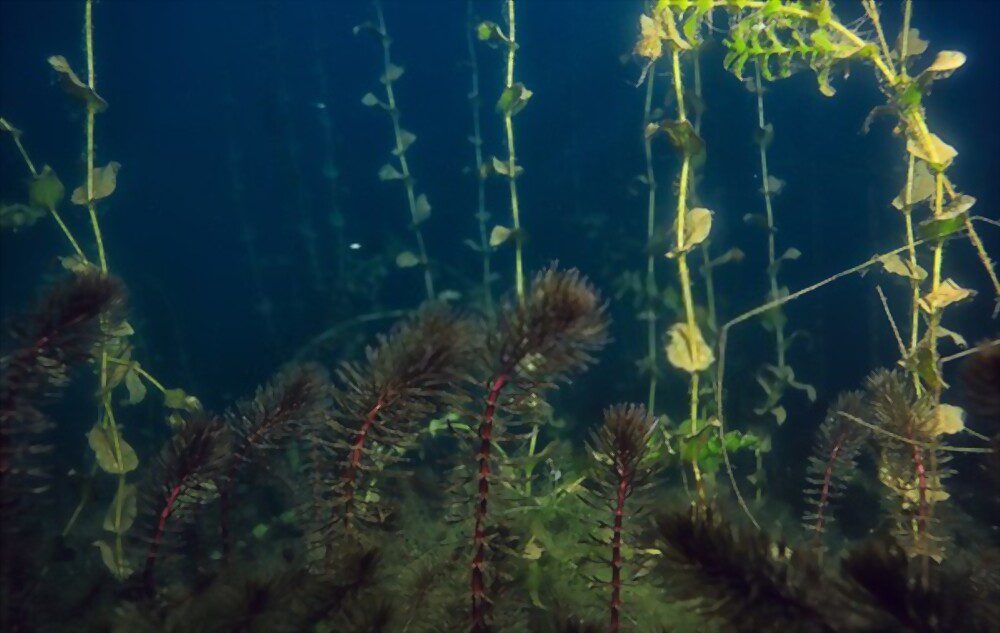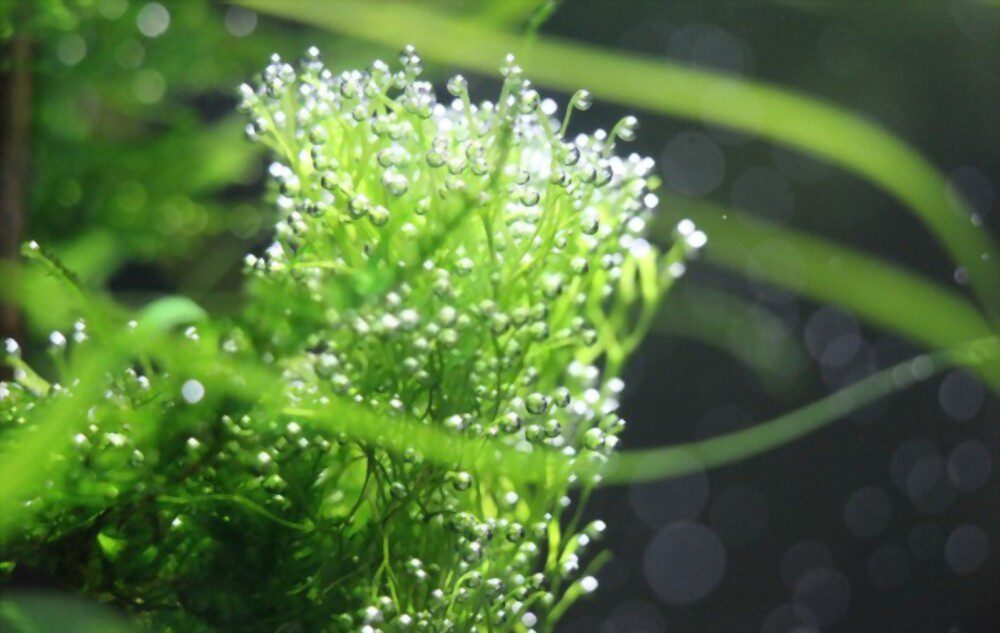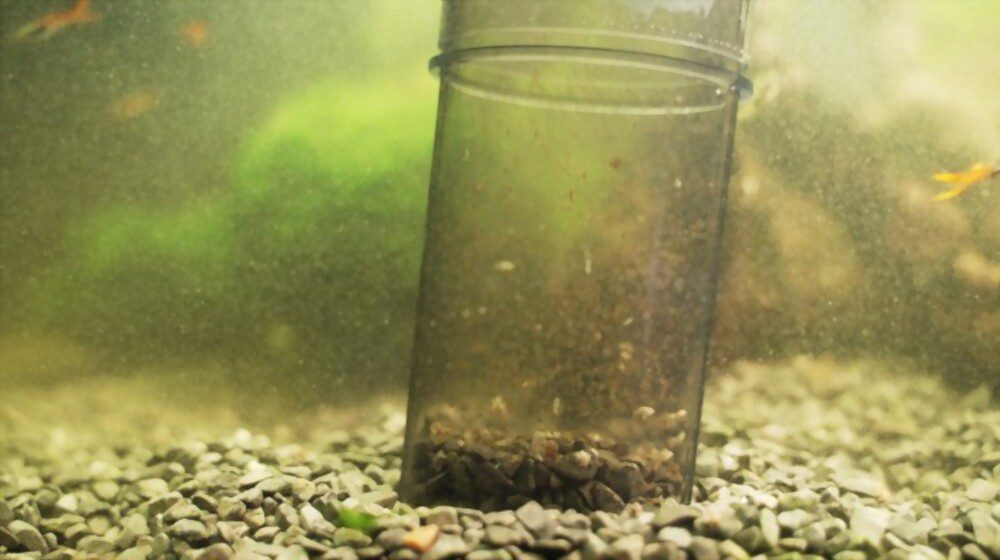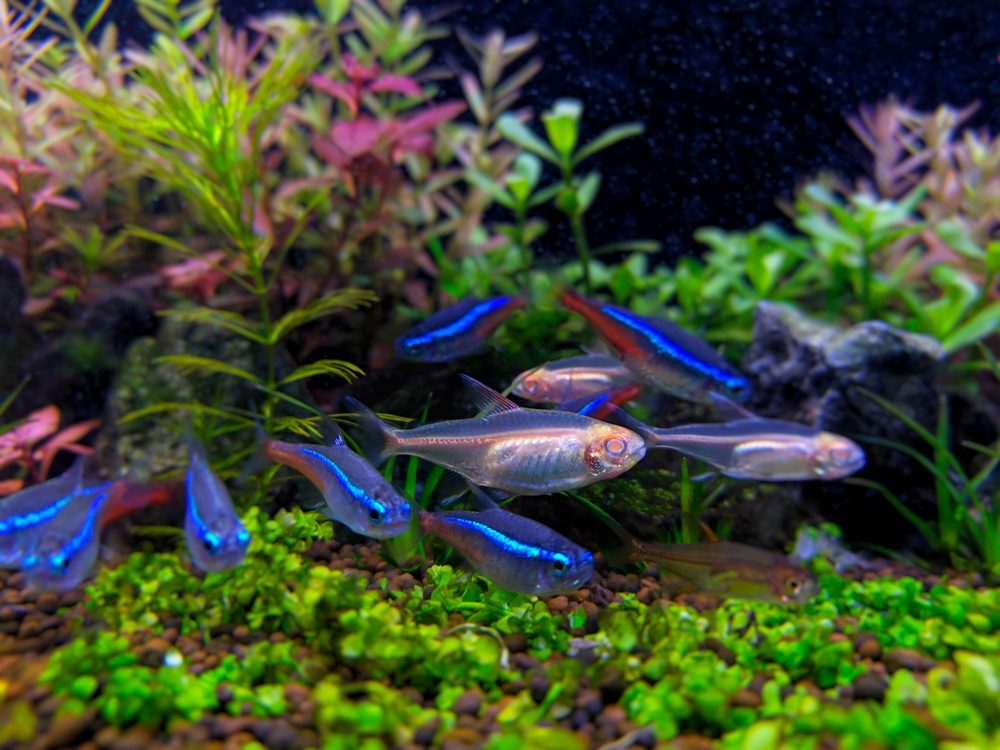Since your fish and aquarium rocks are happy as clams, why are your plants turning brown? Do you need to buy a whole new set of live aquarium plants?
Don’t fret friend, It’s not uncommon for aquarium plants to turn brown and die. I don’t know about you but it drives me crazy when this happens. My frustration led me to do some research on the subject and I came across some surprising results. In fact, according to the information I found, there are some very simple ways that you can prevent your plants from turning brown and dying.
If Plants are “NEW” to Aquarium
When plants are first put into an aquarium they tend to look brown and dry. This is caused by the plants adjusting to their new environment and is completely normal. The new plants will also look much darker in color than what you ordered.
Plants often do this when they’re first introduced to a new tank, even if it’s not a new plant. The reason it happens is that they aren’t used to the temperature and pH of your tank, so they start brown until they adjust. Once they’ve become accustomed to your tank, the leaves will begin to brighten up again.
The amount of time it takes for this change to occur depends on how different your water conditions are from what the plant was used to before. If you have very soft or hard water or very warm or cold water, then it may take longer for the plant to recover than if you had standard aquarium conditions (neutral pH and between 18-22°C).
If after about a week your plants haven’t started to turn green again then there may be another issue at play.
If Plants are “NOT” New to Aquarium
If your plants are not new to the fishing tank then there might be the following reasons for turning plants brown
1. Lack of Nutrients
In many cases, brown aquarium plants occur as a result of a lack of nutrients in the water.
Just like any other living organism, plants need essential nutrients in order to thrive. For example, nitrogen is essential for the growth process while the iron is responsible for the production of chlorophyll in the leaves and stems. A lack of these nutrients often leads to wilting of the leaves and browning of the roots or leaves.
How to Give Proper Nutrients To Your Plants
The issue is compounded if you add fertilizer or additional carbon dioxide to your aquarium because this can cause algae to bloom. The algae then compete with your plants for the same vital nutrients, which usually results in dead or dying plants due to a lack of sunlight and food.
2. Improper Lighting

Lighting is an important aspect of keeping freshwater fish and aquatic plants. Aquariums should be placed in areas that receive moderate light during the day, not in direct sunlight. It is also important to choose a lighting system that is appropriate for the depth of your aquarium.
Unless you have a planted tank, most setups do not require high-intensity lighting. If you have live plants in your aquarium, you will need to provide enough light for them to grow properly. We recommend using fluorescent lights with fixtures specifically made for aquariums. The right amount of brightness can be achieved by using the right bulb and the right wattage.
How to Give Proper Light to Your Fishing Tank Plants
If you have a 10-gallon tank that is 12 inches deep, we recommend using a standard 15-watt bulb. For deeper tanks, we recommend using 20-watt bulbs. If your tank is 36 inches deep, you will need to use two 20 watt bulbs or two 20 watt Compact Fluorescent Lights (CFLs).
If you are going to keep live plants in your tank, it’s best to use color-enhancing fluorescent bulbs such as Life-Glo II or Ultra Sun. These bulbs will bring out the natural colors of your plants and fish whilst providing sufficient light for plant growth.
3. Poor Planting Environment
Plants are important for creating the natural look of an aquarium. They provide hiding places for fish and absorb carbon dioxide and toxins produced by the fish, replacing them with oxygen. However, not every plant will thrive in an aquarium! Some require special lighting or soil, so make sure you choose the right plants before buying them.
How to Set Up Proper Planting Environment for Your Fishing Tank Plants
Choose a mixture of tall and short plants to give your tank some depth. Taller plants also provide cover for your fish to hide in. Place taller plants along the back of the aquarium, but make sure they have enough light to grow. Use low-growing plants to create a border around your rockwork or other decorations. Planting the aquarium this way will allow you to see most of your hard work while still giving your fish somewhere to hide.
Plants need nutrients such as iron (Fe), potassium (K), phosphate (PO4), magnesium (Mg), and calcium (Ca). Root tabs are fertilizers that can be placed at the base of each plant’s roots. They release these nutrients into the substrate over time and ensure that your plants get all the nutrients they need.
4. Lack of CO2

Giving CO2 to plants in an aquarium is the same as giving water.
It’s possible to provide your plants with too much of anything, and CO2 is no exception. A healthy dose of CO2 can help your plants grow, but if you over-feed them with CO2, they could suffer severe damage or die.
Depending on how much CO2 you use and what kinds of plants you’re growing, you may need to adjust the amount of CO2 you feed your plants and test the levels periodically to make sure they aren’t too high.
The amount of carbon dioxide needed depends on the number of plants and the rate of photosynthesis. This can vary from 0.5 to 20 ppm (parts per million) for a planted aquarium.
Ways to Provide CO2 to Your Fishing Tank Plants
The following are ways to provide CO2 to your tank:
1. CO2 Cartridges
Some filters come with cartridges that contain CO2 to help feed plants. This will only work for small tanks and low-light plants. Once the cartridge is empty, you’ll need to replace it with another one. This method is considered temporary until more permanent methods can be set up and are not recommended for long-term use. The main benefit of this type of setup is that it’s inexpensive and easy to install.
2. CO2 Diffuser
Another option is a CO2 diffuser, which uses pressurized gas from a regulator. The gas dissolves the water, thereby injecting it into the tank water column. It’s best used with a reactor or atomizer so that the bubbles do not escape into the atmosphere before dissolving into the water column.
3. Yeast Fermentation
This method involves mixing a solution of yeast, sugar, and water in a bottle, and allowing it to ferment for a few days before adding it to the tank. The fermentation process releases CO2 into the water, which can be absorbed by the plants in the aquarium.
5. Dirty Substrate

Because of the high temperatures and the combination of water, salt, and dirt, the substrate can easily become caked with grime and sediment.
The substrate is made up of materials that turn into a gel under extreme temperatures. The gel helps to keep the heat of the burner from corroding the tank, but it also means that if left unchecked, a buildup of dirt can occur.
While some sediment is natural and will occur no matter how well you take care of your tank, too much buildup can cause problems. For example, if there’s an excess amount of salt in the substrate, it can corrode any metal parts within your tank. This corrosion will shorten the life of your tank and lead to potential leaks or other issues.
Additionally, the dirty substrate can result in lower fuel efficiency for your tank. Because your burner has to work harder in order to get through the sediment and reach optimal temperatures, it uses more propane trying to do so.
Our Final Advice
If you keep on top of your water testing and try everything on this list you will be fine. If you still find it difficult, don’t worry, it’s not rocket science. Just understand the root cause and fix it. I sincerely hope this article will solve your plant problem.
And If you are unsure what else to do then I would advise asking a local aquatic store or LFS for help.
If you have any suggestions or feedback, please let me know in the comment.

